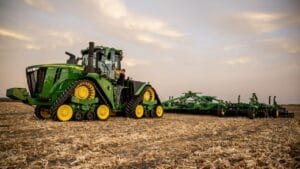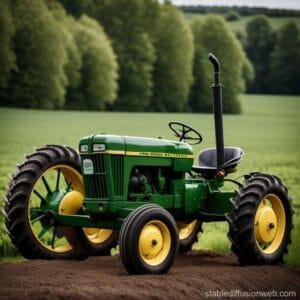The global agricultural automation market is experiencing a paradoxical trend: while unit sales have declined in recent months,the overall adoption of automated farming solutions continues to expand. This shift reflects the agricultural sector’s ongoing transformation, where farmers increasingly embrace technology despite economic pressures. From autonomous tractors to AI-powered irrigation systems, the integration of automated solutions in farming operations persists, demonstrating the industry’s commitment to modernization even in the face of challenging market conditions. The farming sector continues to embrace technological advancements despite a noticeable decline in equipment sales during recent quarters. Industry analysts report that while traditional machinery purchases have decreased, investments in automated solutions have sustained steady growth, particularly in precision agriculture and smart farming technologies.
Farmers are increasingly adopting autonomous systems for tasks like seeding, irrigation, and harvesting. These solutions offer improved efficiency and reduced labor costs, making them attractive even during periods of economic uncertainty. Data from market research firms indicates a 15% increase in automation-related agricultural investments compared to the previous year.
The shift toward automation is particularly evident in specialized crop production, where precision is crucial. Vertical farming operations have seen a significant uptake in robotics and AI-driven systems, with implementation rates rising by 28% annually. These facilities utilize automated climate control, nutrient delivery, and harvesting systems to maximize yield while minimizing human intervention.
Small and medium-sized farms are finding creative ways to incorporate automation through retrofitting existing equipment with smart technologies. This approach allows farmers to modernize their operations without the substantial capital investment required for new machinery. Sensor systems, GPS guidance, and automated spraying mechanisms can be added to conventional tractors and implements at a fraction of the cost of new autonomous equipment.Weather monitoring and irrigation systems have become increasingly complex, with AI-powered solutions providing real-time data and automated adjustments. These systems have shown water savings of up to 30% while improving crop yields by an average of 20%.The return on investment for such technologies typically occurs within two growing seasons.
Livestock operations are also experiencing automation growth, particularly in dairy and poultry sectors. Automated milking systems, feeding robots, and environmental control mechanisms are becoming standard features in modern facilities. These innovations have reduced labor requirements by up to 40% while improving animal welfare and production efficiency.
The development of open-source farming technologies has contributed to the sector’s automation growth. Collaborative platforms allow farmers to share modifications and improvements, creating a community-driven approach to agricultural innovation. This has led to more affordable and accessible automation solutions for farmers of all sizes.
Remote monitoring capabilities have expanded substantially, enabling farmers to manage multiple aspects of their operations through smartphone applications. From soil moisture levels to equipment maintenance schedules, these systems provide extensive oversight while reducing the need for physical presence in the field.Conservation-focused automation has gained traction,with new technologies designed to minimize environmental impact while maintaining productivity. Precision spraying systems have reduced pesticide use by up to 90% in some applications, while automated composting and waste management systems help farms maintain sustainable practices efficiently.










